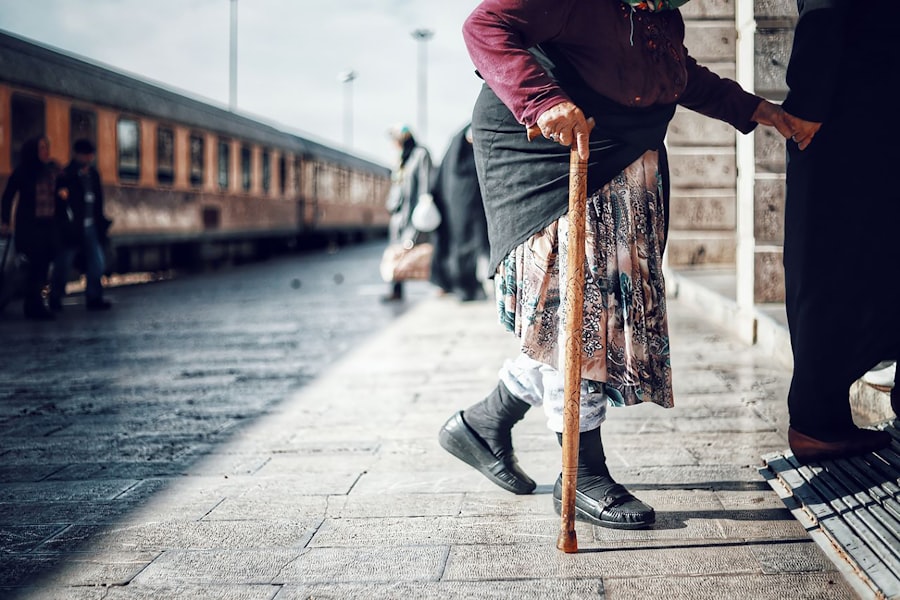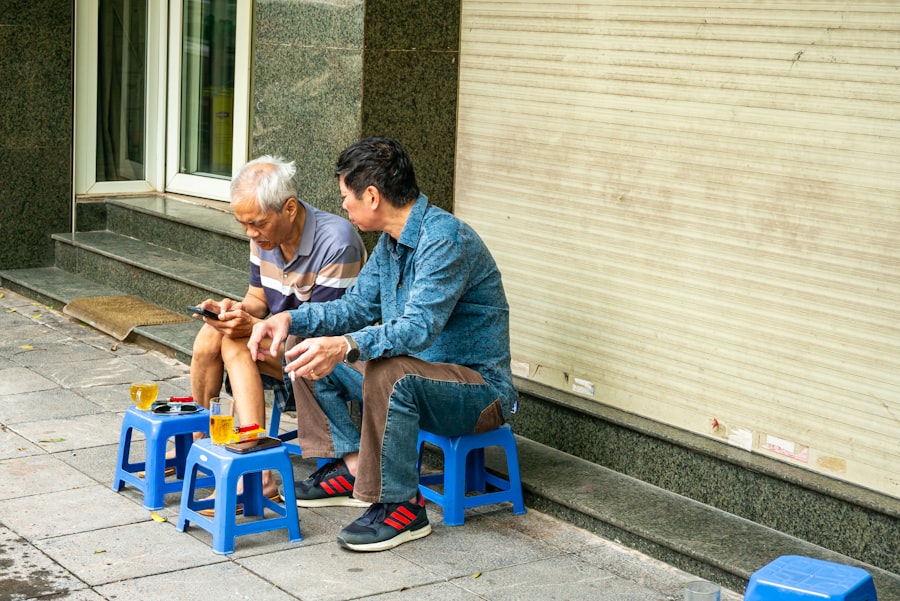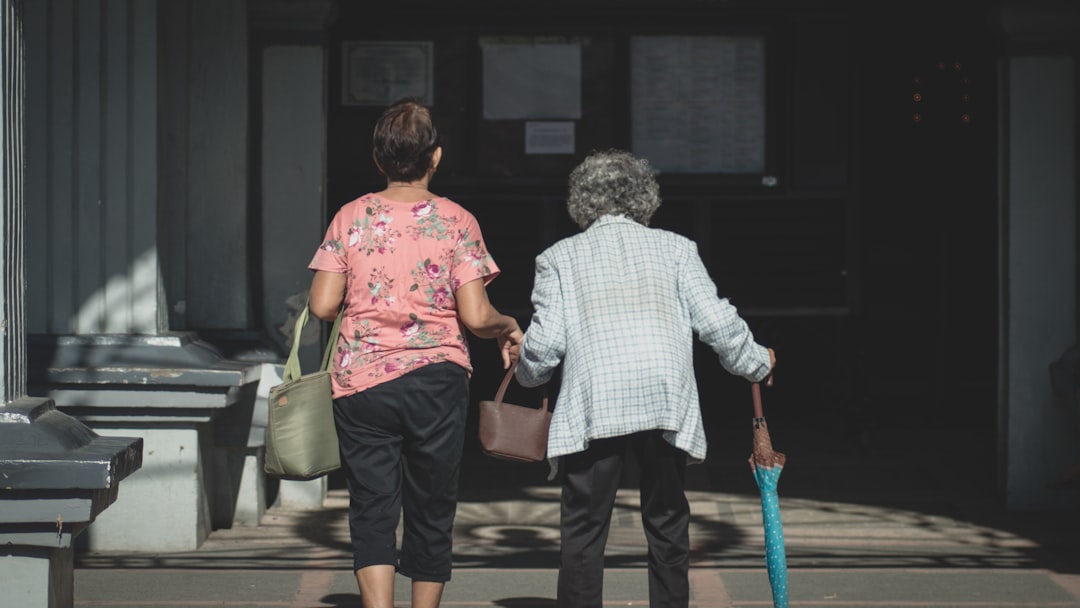Restless Legs Syndrome (RLS) is a neurological disorder that can significantly impact the quality of life for many elderly individuals. If you or someone you know experiences an uncontrollable urge to move the legs, particularly during periods of rest or inactivity, it may be indicative of RLS. This condition often manifests as uncomfortable sensations in the legs, which can range from tingling to aching.
The symptoms typically worsen in the evening or at night, making it difficult to relax or fall asleep. Understanding RLS is crucial, as it can lead to sleep disturbances and increased fatigue, further complicating health issues that are already prevalent in older adults. As you delve deeper into the nature of RLS, you may find that it is not merely a physical ailment but also a psychological burden.
The constant need to move can lead to anxiety and frustration, particularly when it interferes with daily activities or social interactions. Many elderly individuals may feel embarrassed or reluctant to discuss their symptoms, leading to a lack of awareness and understanding of the condition. By recognizing the signs and symptoms of RLS, you can take proactive steps toward seeking relief and improving overall well-being.
Key Takeaways
- Restless Legs Syndrome (RLS) is a common neurological disorder in the elderly, characterized by an irresistible urge to move the legs.
- Common causes of RLS in the elderly include iron deficiency, kidney failure, diabetes, and peripheral neuropathy.
- Medication options for relief of RLS in the elderly include dopamine agonists, benzodiazepines, and opioids, but should be carefully monitored due to potential side effects.
- Lifestyle changes such as regular exercise, avoiding caffeine and alcohol, and maintaining a regular sleep schedule can help alleviate RLS symptoms in the elderly.
- Exercise and stretching, massage, dietary changes, and alternative therapies like acupuncture and yoga can also provide relief for elderly individuals with RLS.
Common Causes of Restless Legs in the Elderly
Several factors contribute to the development of Restless Legs Syndrome in older adults. One of the most common causes is iron deficiency, which can lead to reduced dopamine production in the brain. Dopamine is a neurotransmitter that plays a crucial role in controlling movement, and its deficiency can exacerbate RLS symptoms.
If you suspect that iron deficiency may be a factor, it’s essential to consult with a healthcare provider who can recommend appropriate tests and dietary adjustments. Another significant cause of RLS in the elderly is the presence of chronic health conditions such as diabetes, kidney disease, or peripheral neuropathy. These conditions can affect nerve function and circulation, leading to increased discomfort in the legs.
Additionally, certain medications used to treat these chronic conditions may inadvertently trigger or worsen RLS symptoms. Being aware of these potential causes can empower you to engage in discussions with your healthcare provider about managing your symptoms effectively.
Medication Options for Relief of Restless Legs in the Elderly

When it comes to managing Restless Legs Syndrome, medication can play a vital role in providing relief. There are several options available that your healthcare provider may consider based on your specific symptoms and medical history. Dopaminergic agents, such as pramipexole and ropinirole, are commonly prescribed to help increase dopamine levels in the brain, thereby alleviating the urge to move.
These medications can be particularly effective for those experiencing moderate to severe symptoms. In addition to dopaminergic agents, other medications such as gabapentin and pregabalin may be prescribed for their ability to reduce discomfort associated with RLS. These drugs work by calming nerve activity and can be beneficial for individuals who experience pain or discomfort in their legs.
It’s important to have an open dialogue with your healthcare provider about the potential benefits and side effects of these medications, as well as any interactions with other treatments you may be undergoing.
Lifestyle Changes to Alleviate Restless Legs in the Elderly
| Lifestyle Changes | Effectiveness |
|---|---|
| Regular exercise | Effective in reducing symptoms |
| Healthy diet | May help alleviate symptoms |
| Avoiding caffeine and alcohol | Can reduce symptoms |
| Establishing a regular sleep routine | May improve symptoms |
| Hot or cold packs | Can provide temporary relief |
Incorporating lifestyle changes can significantly improve your experience with Restless Legs Syndrome. One of the most effective strategies is establishing a consistent sleep routine. Going to bed and waking up at the same time each day can help regulate your body’s internal clock, making it easier to fall asleep and stay asleep throughout the night.
Additionally, creating a calming bedtime environment—such as dimming lights and reducing noise—can further enhance your ability to relax. Another lifestyle change that may prove beneficial is reducing caffeine and alcohol intake. Both substances can exacerbate RLS symptoms by disrupting sleep patterns and increasing restlessness.
By limiting these stimulants, you may find that your symptoms become more manageable. Furthermore, staying hydrated and maintaining a balanced diet rich in vitamins and minerals can support overall health and potentially alleviate some RLS symptoms.
Exercise and Stretching for Restless Legs Relief in the Elderly
Engaging in regular physical activity is another effective way to combat Restless Legs Syndrome. Exercise helps improve circulation and reduces feelings of restlessness in the legs. If you’re unsure where to start, consider low-impact activities such as walking, swimming, or cycling.
These exercises not only promote physical health but also contribute to mental well-being by releasing endorphins that elevate mood. In addition to aerobic exercise, incorporating stretching routines into your daily regimen can provide immediate relief from RLS symptoms. Gentle stretches targeting the legs and lower back can help alleviate tension and promote relaxation.
By prioritizing both exercise and stretching, you can create a holistic approach to managing your Restless Legs Syndrome.
Massage and Other Therapeutic Techniques for Restless Legs in the Elderly

Massage therapy is another avenue worth exploring for relief from Restless Legs Syndrome. The soothing effects of massage can help reduce muscle tension and improve circulation in the legs, providing immediate comfort. If you have access to a professional massage therapist, consider scheduling regular sessions focused on your lower extremities.
Alternatively, self-massage techniques can also be effective; simply using your hands to knead and apply pressure to your legs can yield positive results. In addition to massage, other therapeutic techniques such as acupuncture or reflexology may offer relief from RLS symptoms. These alternative therapies focus on stimulating specific points on the body to promote relaxation and balance energy flow.
While research on their effectiveness for RLS is still ongoing, many individuals report positive experiences with these treatments. Exploring various therapeutic options allows you to find what works best for you in managing your symptoms.
Dietary Changes to Help with Restless Legs in the Elderly
Your diet plays a crucial role in managing Restless Legs Syndrome, particularly when it comes to ensuring adequate nutrient intake. As previously mentioned, iron deficiency is a common contributor to RLS symptoms; therefore, incorporating iron-rich foods into your meals is essential. Foods such as lean meats, beans, lentils, spinach, and fortified cereals can help boost your iron levels.
Pairing these foods with vitamin C-rich options like citrus fruits can enhance iron absorption. In addition to iron, ensuring sufficient magnesium and folate intake may also benefit those with RLS. Magnesium helps regulate muscle function and nerve transmission, while folate supports overall neurological health.
Foods such as nuts, seeds, leafy greens, and whole grains are excellent sources of these nutrients. By making conscious dietary choices, you can support your body’s needs and potentially alleviate some of the discomfort associated with Restless Legs Syndrome.
Alternative Therapies for Restless Legs Relief in the Elderly
Exploring alternative therapies can provide additional avenues for managing Restless Legs Syndrome effectively. One popular option is aromatherapy, which utilizes essential oils known for their calming properties. Oils such as lavender or chamomile can be diffused in your living space or added to a warm bath before bedtime to promote relaxation and ease tension in the legs.
Another alternative therapy worth considering is yoga or tai chi. These practices focus on gentle movements combined with deep breathing techniques that promote relaxation and mindfulness. Engaging in regular sessions can help reduce stress levels while improving flexibility and circulation—both of which are beneficial for managing RLS symptoms.
By incorporating alternative therapies into your routine, you may discover new ways to find relief from Restless Legs Syndrome.
Managing Stress and Anxiety to Reduce Restless Legs in the Elderly
Stress and anxiety are known triggers for many health conditions, including Restless Legs Syndrome. If you find that stress exacerbates your symptoms, it’s essential to develop effective coping strategies. Mindfulness practices such as meditation or deep breathing exercises can help calm your mind and body, reducing feelings of restlessness.
Additionally, engaging in hobbies or activities that bring you joy can serve as a distraction from stressors while promoting relaxation. Whether it’s gardening, painting, or reading a good book, finding time for enjoyable pursuits can significantly improve your overall mental well-being. By actively managing stress and anxiety levels, you may notice a positive impact on your RLS symptoms.
Improving Sleep Quality for Elderly with Restless Legs Syndrome
Quality sleep is vital for everyone but becomes increasingly important as we age—especially for those dealing with Restless Legs Syndrome. Establishing a sleep-friendly environment is crucial; consider keeping your bedroom dark, cool, and quiet to promote restful sleep. Investing in comfortable bedding and pillows can also enhance your sleeping experience.
In addition to creating an optimal sleep environment, developing a pre-sleep routine can signal your body that it’s time to wind down. Activities such as reading a book or practicing relaxation techniques before bed can help prepare both your mind and body for sleep. By prioritizing sleep hygiene practices, you may find that your symptoms become more manageable over time.
Seeking Professional Help for Severe Restless Legs Symptoms in the Elderly
If you find that your Restless Legs Syndrome symptoms are severe or unmanageable despite trying various strategies, seeking professional help is essential. A healthcare provider specializing in sleep disorders or neurology can offer valuable insights into your condition and recommend tailored treatment options based on your unique needs. In some cases, further evaluation may be necessary to rule out underlying medical conditions contributing to RLS symptoms.
Your healthcare provider may suggest additional tests or refer you to specialists who can provide comprehensive care. Remember that seeking help is not only a sign of strength but also an important step toward reclaiming control over your health and well-being. By understanding Restless Legs Syndrome and exploring various management strategies—from medication options to lifestyle changes—you empower yourself or your loved ones to navigate this challenging condition more effectively.
With patience and persistence, relief from RLS symptoms is achievable.
Restless legs syndrome (RLS) can be particularly challenging for the elderly, as it often disrupts sleep and affects overall quality of life. When considering what to take for restless legs in elderly individuals, it’s important to explore both lifestyle changes and medical treatments. An article that might be of interest is available on Explore Senior Health, which provides insights into managing RLS through various approaches tailored for seniors. This resource can be invaluable for caregivers and family members seeking to improve the well-being of their loved ones dealing with this condition.
💰 The Secret History of the Dollar: How Oil Replaced Gold (The Petrodollar Mystery)
FAQs
What are restless legs in the elderly?
Restless legs syndrome (RLS) is a neurological disorder characterized by an uncontrollable urge to move the legs, often accompanied by uncomfortable sensations. It can be particularly bothersome at night and can disrupt sleep.
What are the common treatments for restless legs in the elderly?
Common treatments for restless legs in the elderly include lifestyle changes, such as regular exercise and avoiding caffeine and alcohol, as well as medications like dopamine agonists, benzodiazepines, and anticonvulsants.
What medications can be taken for restless legs in the elderly?
Medications commonly prescribed for restless legs in the elderly include pramipexole, ropinirole, gabapentin, and pregabalin. These medications can help alleviate symptoms and improve sleep quality.
Are there any natural remedies for restless legs in the elderly?
Some natural remedies that may help alleviate restless legs in the elderly include iron supplements, hot or cold packs, and massage. However, it’s important to consult with a healthcare professional before trying any natural remedies.
What should elderly individuals avoid if they have restless legs?
Elderly individuals with restless legs should avoid triggers such as caffeine, alcohol, and certain medications that can exacerbate symptoms. It’s also important to maintain a regular sleep schedule and practice good sleep hygiene.
